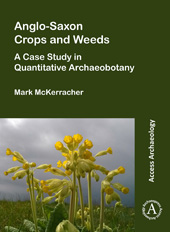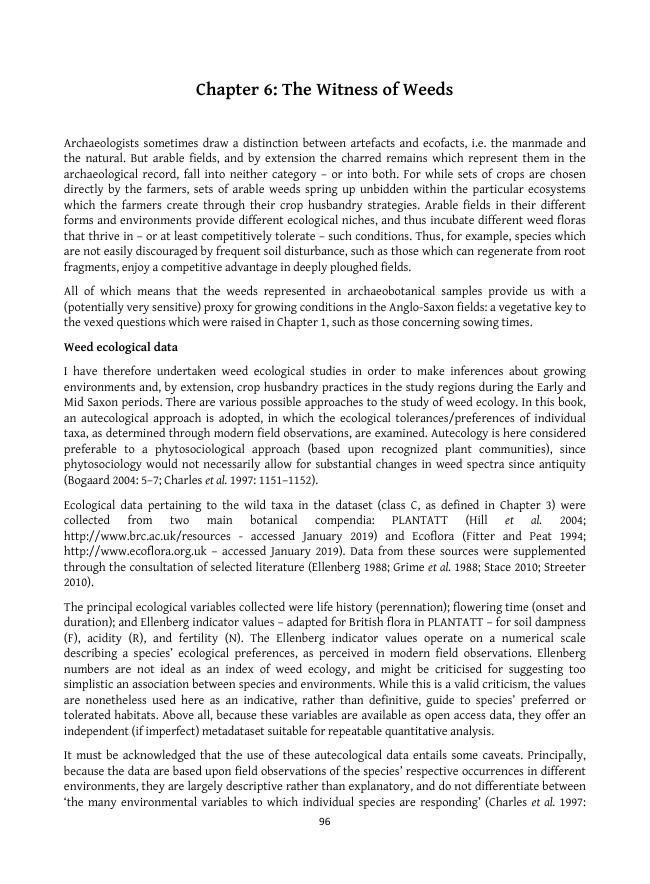Anglo-Saxon Crops and Weeds : A Case Study in Quantitative Archaeobotany
218 p.
There is a growing recognition within Anglo-Saxon archaeology that farming practices underwent momentous transformations in the Mid Saxon period, between the seventh and ninth centuries AD: transformations which underpinned the growth of the Anglo-Saxon kingdoms and, arguably, set the trajectory for English agricultural development for centuries to come. Meanwhile, in the field of archaeobotany, a growing set of quantitative methods has been developed to facilitate the systematic investigation of agricultural change through the study of charred plant remains. This study applies a standardised set of repeatable quantitative analyses to the charred remains of Anglo-Saxon crops and weeds, to shed light on crucial developments in crop husbandry between the seventh and ninth centuries. The analyses demonstrate the significance of the Anglo-Saxon archaeobotanical record in elucidating how greater crop surpluses were attained through ecologically-sensitive diversification and specialisation strategies in this period
. At the same time, assumptions, variables and key parameters are presented fully and explicitly to facilitate repetition of the work, thus also enabling the book to be used as a source of comparative data and a methodological handbook for similar research in other periods and places. It constitutes a specialist, data-driven companion volume to the author's more general narrative account published as 'Farming Transformed in Anglo-Saxon England' (Windgather, 2018). [Publisher's text].
Special access authorizations may apply; please contact us for further information.
-
Information
ISBN: 9781789691931
DISCIPLINES
KEYWORDS
- Anglo-Saxon, Farming, archaeobotany, agricultural change, Mid Saxon, charred plant remains



